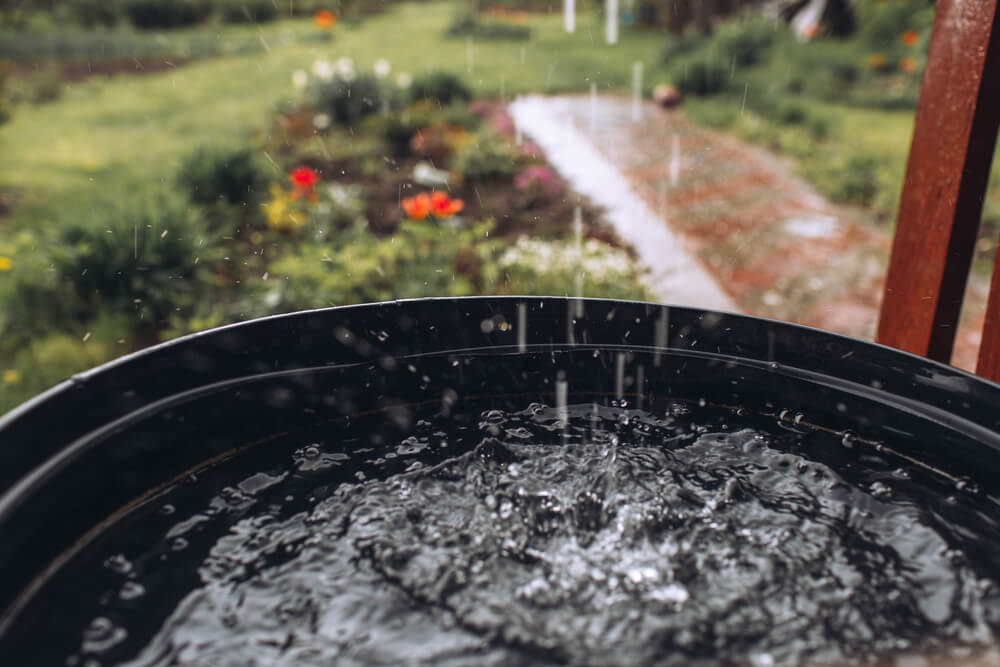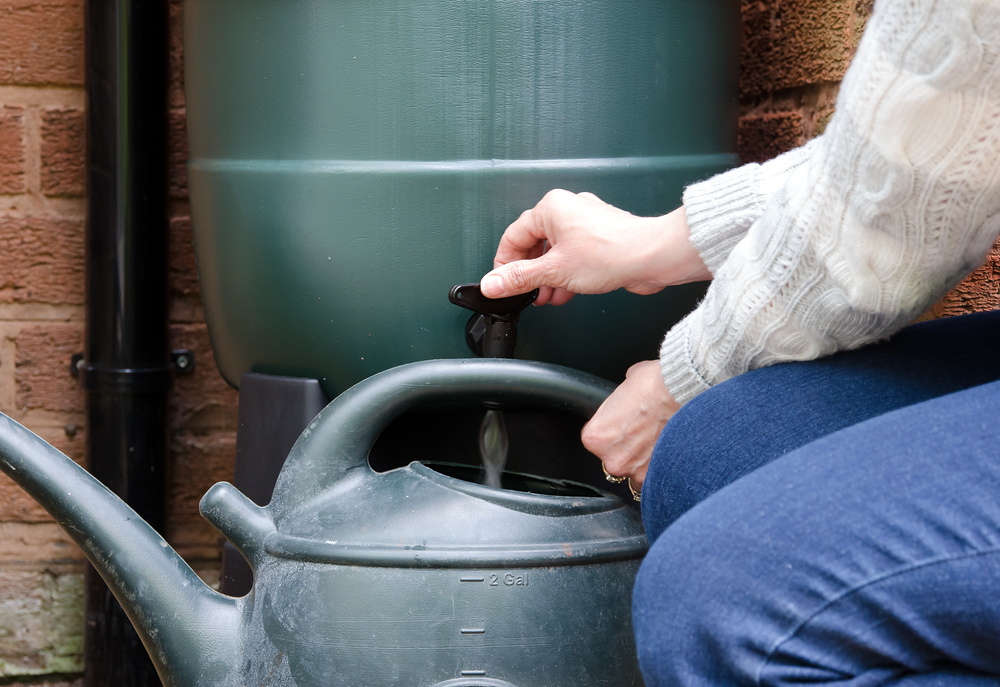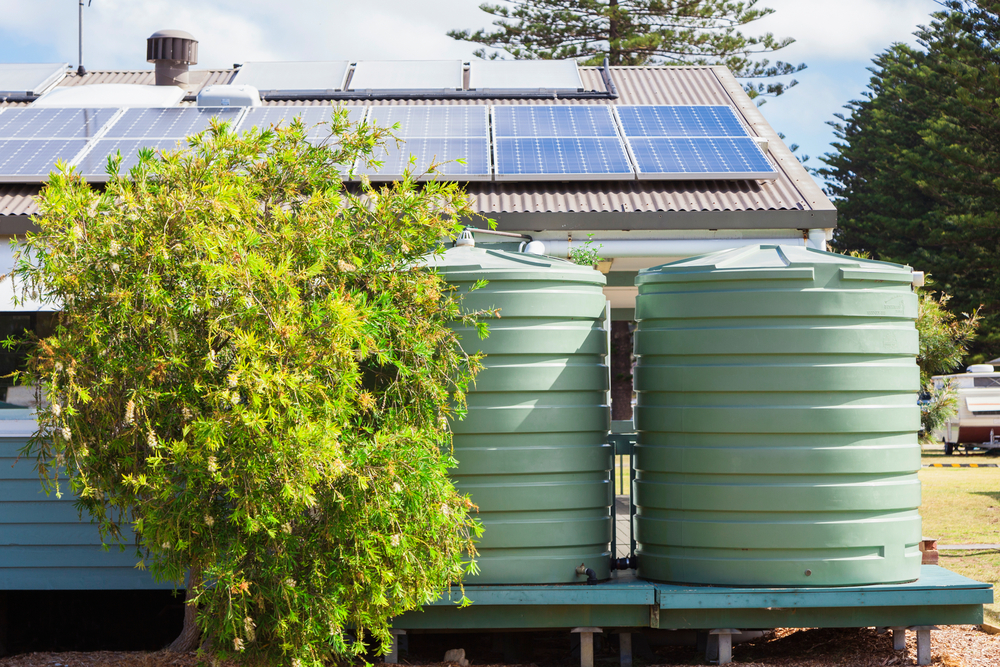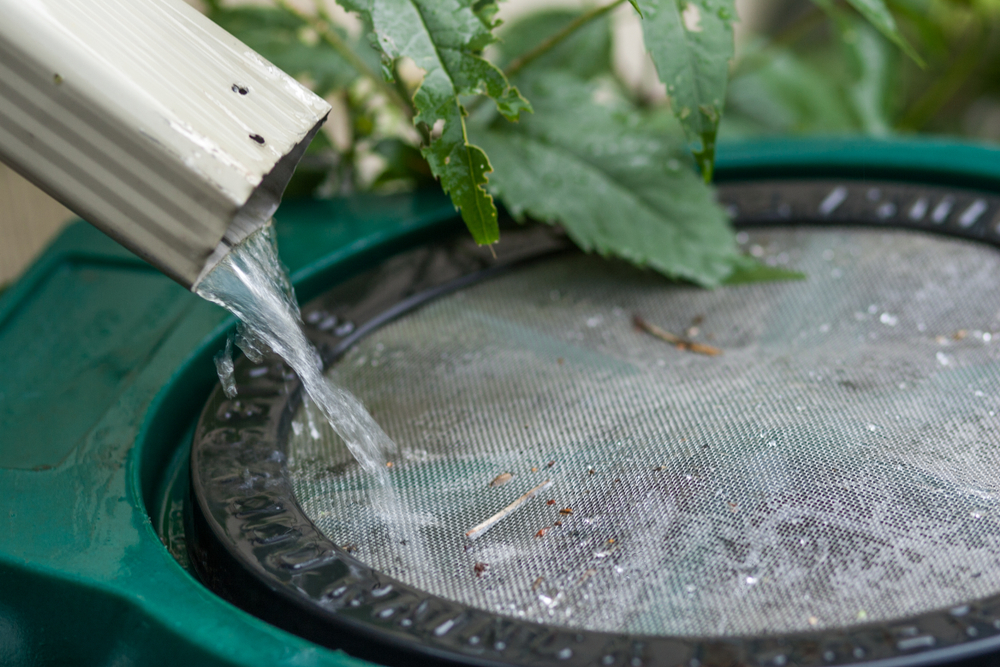Rainwater Harvesting Tips for Beginners
How to collect and store rain for reuse.
Rainwater Harvesting Tips for Beginners
How to collect and store rain for reuse.

It's not as easy as you might think!by Anna_L, Shutterstock.
How hard could collecting rainwater really be? Just put out a bucket and wait for the clouds, right?
Well, not really. This task is deceptively complex, but it can be a game changer for some growers. Whether you have a small backyard garden or a large farm, making the most of rainwater—a free resource we all desperately need—is crucial. But before you rush into it, there are some key steps you need to take first.
Check Your Local Laws
Believe it or not, there are some states where collecting rainwater is restricted. Colorado, Arkansas and Illinois all have restrictions on how residents can harvest rainwater, how much they can keep and what they can use it for.
Alternatively, some states, such as Florida, Rhode Island and Virginia, not only encourage citizens to collect rainwater but even offer incentives in the form of rebates or state-provided rain barrels.

In some cases, your state may not have any laws dictating rainwater harvesting, but they may have specific plumbing codes you’ll have to adhere to for any complicated setups. Plus, if you belong to a homeowner association, you should check your bylaws as well. Better safe than sorry.
What Will You Use the Water For?
Before you collect a drop, figure out what you’re going to use the rain for. This will help you decide how big a tank you’ll want to get, if you need to deal with extra plumbing and where to keep everything.
Rain barrels come in a variety of sizes, and the size of your tank depends on a few factors: how much rain you’re aiming to collect and where you will keep it. It’s easy to forget when it’s a few droplets, but water is heavy—more than eight pounds per gallon heavy. So, if you have a 3,000-gallon tank, “it can be very heavy and dangerous at the same time,” says Christy Langendoen, owner of Water Storage Tanks, Inc. in Austin, Texas. She’s also a board member for the American Rainwater Catchment Systems Association (ARCSA), a nonprofit with great resources to get you started. As Langendoen explains, because water is so heavy, there could be codes or regulations to follow when you harvest it in large volumes. “You might need structural engineering for your tank, so you don’t hurt yourself or others,” she says.

By deciding what you’ll use the water for, you can also figure out how you might need to treat or clean the water. Langendoen says that, for the most part, if you’re using the water to irrigate your plants, you don’t need to treat it beforehand. But if you plan to drink or cook with the water, you absolutely should. ARCSA has a procedure that will help you treat the water to get rid of sediment filtration and bacteria. “Rainwater doesn’t have bacteria in its own right, but when it hits the catchment surface, for instance, your roof, it will pick up bacteria,” Langendoen says. There are also groundwater collection systems, but, similarly, once water hits the ground, it will pick up bacteria, along with oils and other sediments. So, before you drink that water, clean it up.
What’s Your Maintenance Plan?
Let’s say you only plan to use the water for irrigating crops. That means you don’t need to worry about treating it, right? Well, sort of. You don’t have to treat it the same way, but you do want to keep your water tank clean and clear of gunk. That’s where pre-filtration comes in.
“We want to prevent leaves and debris from going into the tank. So, there are different screens and different filters to keep that major debris out,” Langendoen says. There’s also something called a first-flush diverter, a setup that automatically diverts the return inches of rainwater out of your tank. “That’s assuming that things like bird feces and pollen will come off your roof at that moment, which is not always the case. But there are different types of pre-filtration that you will want to do for irrigation, because you don’t want your tank itself to become basically a tea pot with a tea bag in it.”

Depending on how often you use your collected water, you’ll also want to make sure that it’s aerated to keep it fresh and make sure it doesn’t grow stagnant, which is when it takes on a murky appearance or develops algae or a surface scum. The longer you go between uses of the water, the more important aerating it becomes. You can store the rainwater for a long time as long as you keep it free of pests and aerated.
So, should you harvest rainwater? Absolutely.
The benefits might be obvious for people in dryer climates, but even residents of rainy states should take advantage of collecting rainwater. “In your dry, arid states like Arizona, you want to capture that rain when it does fall, so you can utilize it when you don’t have it,” Langendoen says. But even in areas where a lot of rain might fall, such as the Pacific Northwest, collecting rainwater can help with stormwater management. “It detains the water during a rainfall that would typically go straight to rivers and streams, which creates flooding.” Holding that rainwater back can help a lot with groundwater management and slow the buildup of water in low-lying areas.
It’s a little more complicated than putting out a bucket and waiting for the clouds, but harvesting rainwater is definitely worth it.
Follow us
This work is licensed under a Creative Commons Attribution-NoDerivatives 4.0 International License.
Want to republish a Modern Farmer story?
We are happy for Modern Farmer stories to be shared, and encourage you to republish our articles for your audience. When doing so, we ask that you follow these guidelines:
Please credit us and our writers
For the author byline, please use “Author Name, Modern Farmer.” At the top of our stories, if on the web, please include this text and link: “This story was originally published by Modern Farmer.”
Please make sure to include a link back to either our home page or the article URL.
At the bottom of the story, please include the following text:
“Modern Farmer is a nonprofit initiative dedicated to raising awareness and catalyzing action at the intersection of food, agriculture, and society. Read more at <link>Modern Farmer</link>.”
Use our widget
We’d like to be able to track our stories, so we ask that if you republish our content, you do so using our widget (located on the left hand side of the article). The HTML code has a built-in tracker that tells us the data and domain where the story was published, as well as view counts.
Check the image requirements
It’s your responsibility to confirm you're licensed to republish images in our articles. Some images, such as those from commercial providers, don't allow their images to be republished without permission or payment. Copyright terms are generally listed in the image caption and attribution. You are welcome to omit our images or substitute with your own. Charts and interactive graphics follow the same rules.
Don’t change too much. Or, ask us first.
Articles must be republished in their entirety. It’s okay to change references to time (“today” to “yesterday”) or location (“Iowa City, IA” to “here”). But please keep everything else the same.
If you feel strongly that a more material edit needs to be made, get in touch with us at [email protected]. We’re happy to discuss it with the original author, but we must have prior approval for changes before publication.
Special cases
Extracts. You may run the first few lines or paragraphs of the article and then say: “Read the full article at Modern Farmer” with a link back to the original article.
Quotes. You may quote authors provided you include a link back to the article URL.
Translations. These require writer approval. To inquire about translation of a Modern Farmer article, contact us at [email protected]
Signed consent / copyright release forms. These are not required, provided you are following these guidelines.
Print. Articles can be republished in print under these same rules, with the exception that you do not need to include the links.
Tag us
When sharing the story on social media, please tag us using the following: - Twitter (@ModFarm) - Facebook (@ModernFarmerMedia) - Instagram (@modfarm)
Use our content respectfully
Modern Farmer is a nonprofit and as such we share our content for free and in good faith in order to reach new audiences. Respectfully,
No selling ads against our stories. It’s okay to put our stories on pages with ads.
Don’t republish our material wholesale, or automatically; you need to select stories to be republished individually.
You have no rights to sell, license, syndicate, or otherwise represent yourself as the authorized owner of our material to any third parties. This means that you cannot actively publish or submit our work for syndication to third party platforms or apps like Apple News or Google News. We understand that publishers cannot fully control when certain third parties automatically summarize or crawl content from publishers’ own sites.
Keep in touch
We want to hear from you if you love Modern Farmer content, have a collaboration idea, or anything else to share. As a nonprofit outlet, we work in service of our community and are always open to comments, feedback, and ideas. Contact us at [email protected].by Emily Baron Cadloff, Modern Farmer
June 23, 2022
Modern Farmer Weekly
Solutions Hub
Innovations, ideas and inspiration. Actionable solutions for a resilient food system.
ExploreExplore other topics
Share With Us
We want to hear from Modern Farmer readers who have thoughtful commentary, actionable solutions, or helpful ideas to share.
SubmitNecessary cookies are absolutely essential for the website to function properly. This category only includes cookies that ensures basic functionalities and security features of the website. These cookies do not store any personal information.
Any cookies that may not be particularly necessary for the website to function and are used specifically to collect user personal data via analytics, ads, other embedded contents are termed as non-necessary cookies.
Thanks for the post…
Neat collection method.
Great article. I’ve been checking this blog constantly and I’m impressed! Extremely useful information, especially the last part where wheel spinner made me process a lot of information. I have been looking for this information for a long time. thanks and good luck!
Great thoughts
I am overjoyed to have found out about this helpful website. It teaches me a lot of intriguing information about everything that’s going on, especially the subject matter of the article that was just before this one.
You can store the rainwater for a long time as long as you keep it free of pests and aerated.